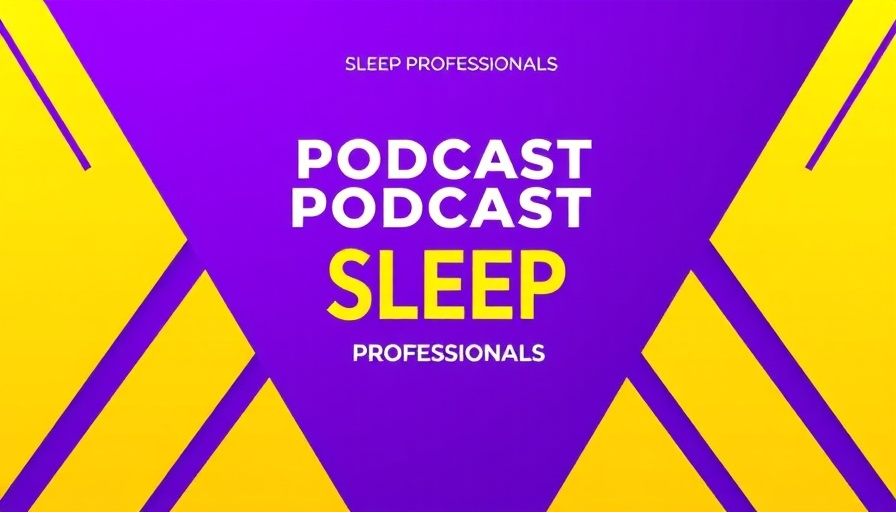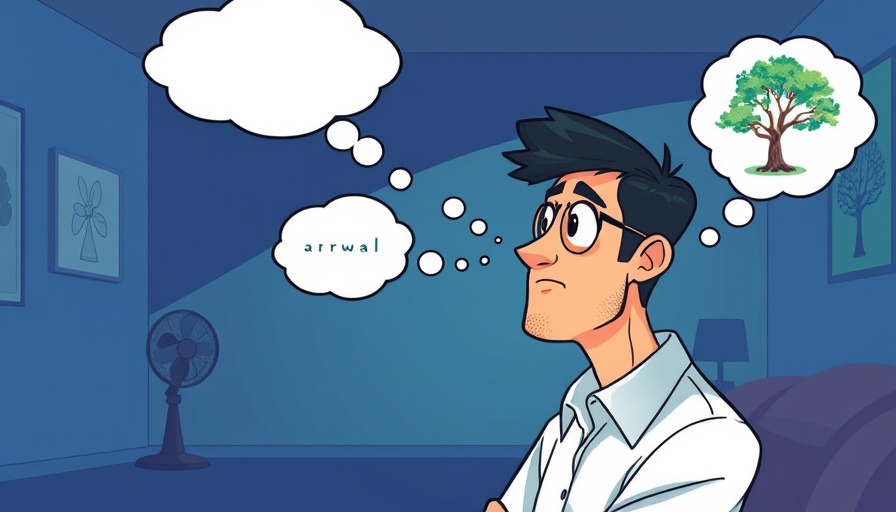
Understanding Obstructive Sleep Apnea Beyond Traditional Metrics
In the realm of sleep medicine, the term "well-treated" obstructive sleep apnea (OSA) has often been narrowly defined by standard metrics such as the Apnea-Hypopnea Index (AHI) and the consistent use of Positive Airway Pressure (PAP) devices. However, Dr. Seema Khosla and Dr. Barry Krakow, renowned figures in the field, urge for a broader understanding. They propose that to truly gauge the effectiveness of OSA treatment, we must consider various clinical endpoints and factors such as patient anxiety and overall well-being.
The Complex Relationship Between Sleep Apnea and Mental Health Issues
Sleep apnea's interaction with conditions like anxiety and PTSD complicates treatment strategies. For instance, Dr. Krakow emphasizes tailored PAP therapy approaches for people grappling with PTSD alongside their OSA. The psychological impact of sleep apnea often extends beyond physical symptoms; it can lead to compounded sleep disturbances, affecting patients' mental health. A multidisciplinary approach to treatment is vital, integrating both physical and psychological assessments to foster a more comprehensive management of OSA.
Innovative Treatment Strategies in Sleep Medicine
In recent years, advances in telehealth and behavioral interventions have opened new avenues for patients struggling with OSA. Techniques such as cognitive-behavioral therapy for insomnia (CBT-I) are becoming increasingly relevant in managing sleep disorders beyond just applying PAP devices. The adaptation of behavioral therapies not only addresses sleep quality but also nurtures overall health and wellness by tackling the mental barriers to effective treatment.
Future Directions in Obstructive Sleep Apnea Management
As sleep medicine evolves, the potential integration of technology in facilitating OSA management cannot be ignored. Continuous monitoring devices that provide real-time feedback on sleep patterns may soon become commonplace, allowing healthcare providers to tailor treatments more precisely to individual needs. Moreover, advancements in wearable technologies could aid in early detection and more proactive interventions for patients.
The Importance of Community Health and Wellness Initiatives
This evolution in understanding obstructive sleep apnea reflects a broader trend within health and wellness communities that emphasizes a commitment to optimal health through awareness and education. Numerous health and wellness centers in areas such as San Antonio are stepping up efforts to inform communities about the significance of sleep disorders and their treatment. Awareness campaigns and wellness events are pivotal in fostering a culture where individuals are encouraged to seek help for sleep-related issues.
The Road Ahead: Empowering Patients for Better Sleep
Ultimately, empowering patients to advocate for themselves and recognize the signs of sleep apnea is pivotal. The more informed individuals are about OSA, its symptoms, and management strategies, the more likely they will seek timely interventions. Educational resources and community support systems can provide necessary backing for those navigating these challenges. Therefore, attending local health and wellness events can significantly benefit individuals looking to enhance their understanding and control over their health.
To further explore insights into effective sleep apnea management and related health topics, consider attending community wellness events or consulting local health practitioners who specialize in sleep medicine.
 Add Row
Add Row  Add
Add 




 Add Row
Add Row  Add
Add 


Write A Comment